Last month I had a very exciting weekend when I finally got the opportunity to hold in my very own hands the two remaining (and mysterious) “Otto Anderson” harp guitars.
For those new to this remarkable story, here’s a quick re-cap:
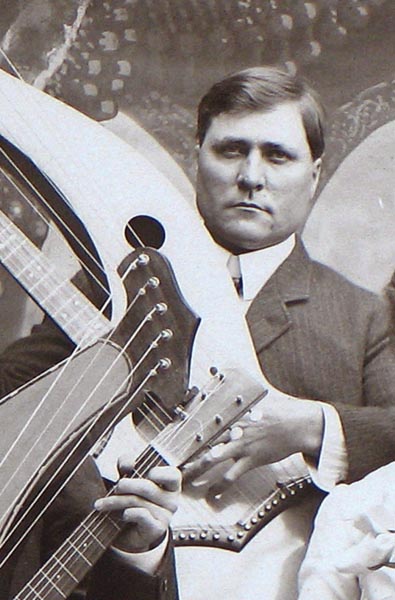
From the beginning, we always assumed that harp guitar builder Chris Knutsen (above, in 1902) was a one-man operation.

In the fall of 2002, we learned from Jeanette Detlor that her grandfather Otto E. Anderson (above, with family c.1894) built some of Knutsen’s early harp guitars.
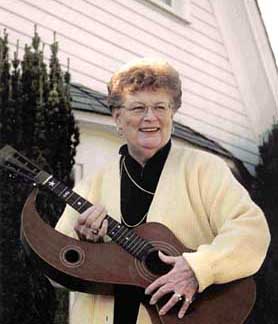
Jeanette owns a miniature harp guitar built by Otto for one of his children (above), and also pictures of a couple other Anderson instruments, which we wrote up and archived on The Knutsen Archives here. Those images included one of a curious wrap-around “continuous arm” harp guitar (below).
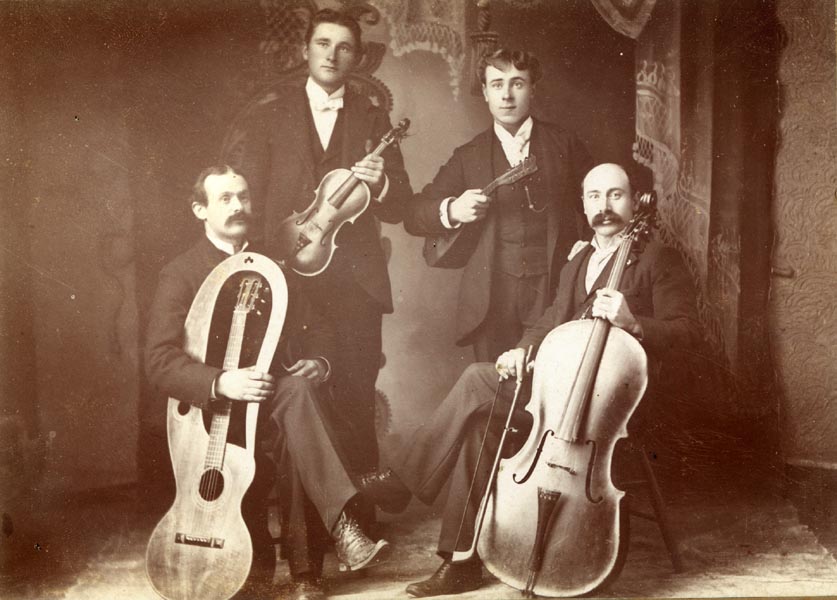
In early 2004, we discovered that musician Flip Breskin of Bellingham, WA owned the very continuous-arm Anderson harp guitar from the c.1900 photo (the photos here and below of Flip’s guitar are my own 2009 shots, not yet on the site).
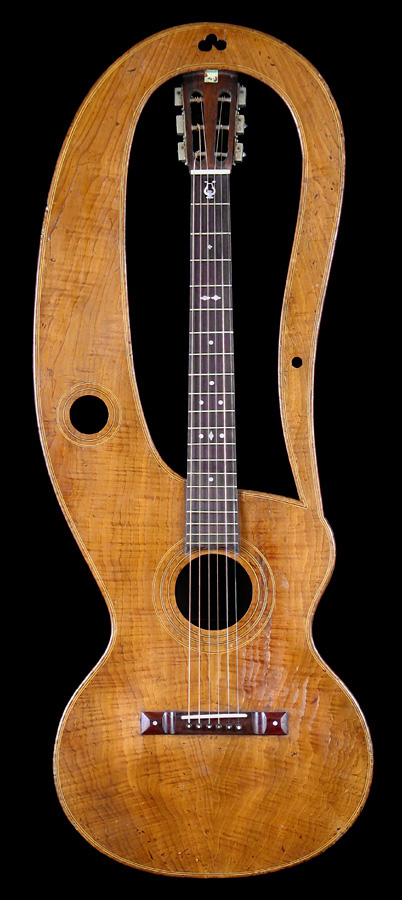
In early 2004, we discovered that musician Flip Breskin of Bellingham, WA owned the very continuous-arm Anderson harp guitar from the c.1900 photo (the photos here and below of Flip’s guitar are my own 2009 shots, not yet added to the Archives).
Meanwhile, Jeanette Detlor later tracked down two more surviving instruments in the hands of one of her cousins (Gary Wright) – one being a second “continuous arm.” Gary soon sent me a low-res photo of each, which have since been on the site (HGP25 and HGS58). In 2010, Jeanette’s husband John sent me a set of better photos (from which I learned quite a bit more), though I never got around to updating the entries. Despite John’s excellent photos, I remained anxious to inspect these two instruments, as they still contained mysteries: the former (at left), with its four drilled holes in the top, the latter (at right) because I couldn’t tell if it was a Knutsen, an Anderson or a combo (it was originally presumed to be one of the Anderson-built family instruments.)
It’s now three-to-four years later, and the story has finally come to an end (although a still tentative and inconclusive end!). Last month, Gary and his wife Rosie drove down from upper Washington in their motorhome to visit various friends and relatives. Having planned to stop by my place for a visit, they brought the two instruments with them (how they kept the pillowcase-wrapped treasures from constantly getting underfoot while on route remains a mystery).
Meeting them at the house during my lunch hour, I simply didn’t have time to inspect the instruments to my satisfaction, nor take any photos, so they very kindly left the instruments with me for the weekend while they continued on further south.
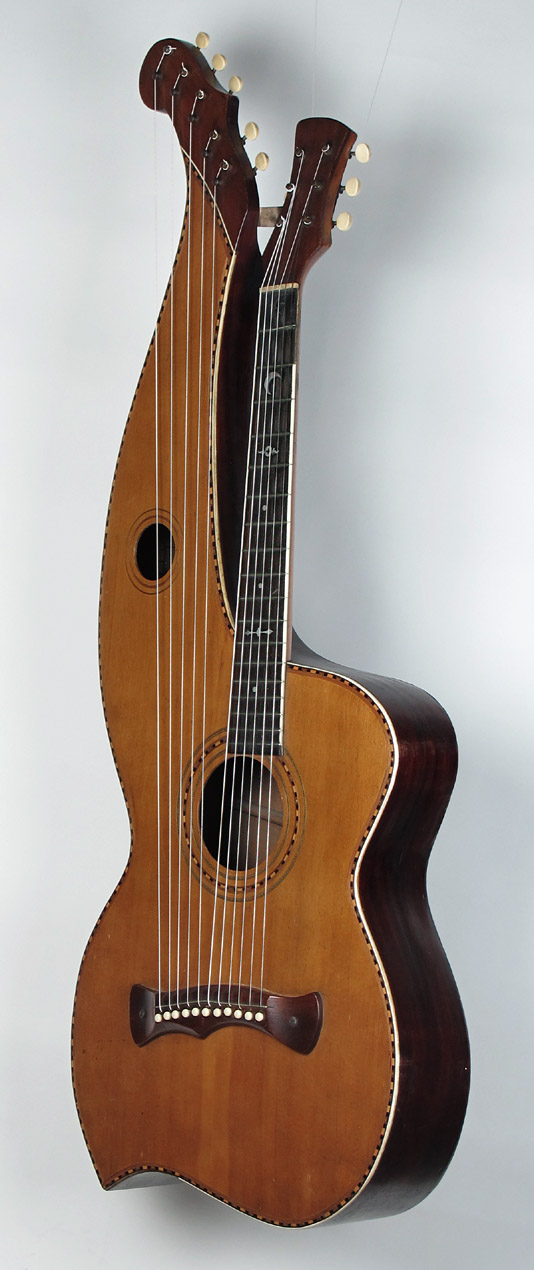
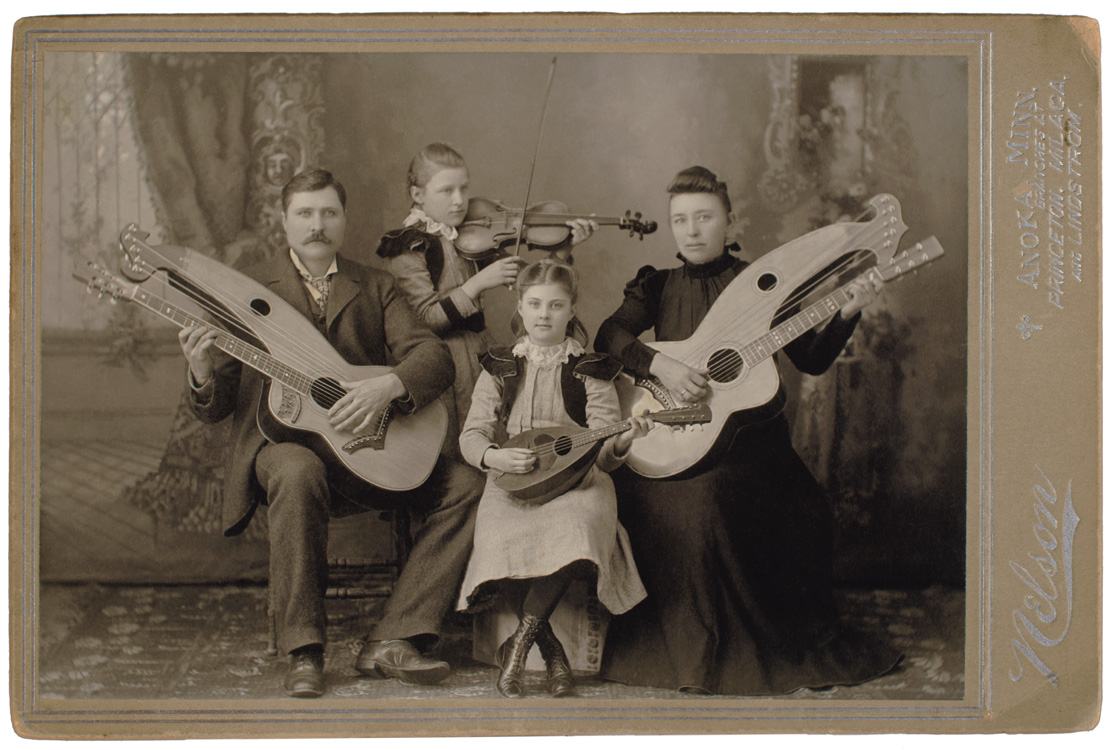 Chris Knutsen and family, c.1897-1898. Note his harp guitar’s transitional “missing link” bass headstock.
Chris Knutsen and family, c.1897-1898. Note his harp guitar’s transitional “missing link” bass headstock.
They also left this priceless cabinet card, which I had professionally photographed, then professionally cleaned and repaired via Photoshop (click original condition above for final results ). It is the same photo of the Knutsen family that Jeannette Detlor had in her files from her mother. This remarkable studio portrait was taken sometime in the late 1890’s (the exact year, which is of great interest, still eludes us). This particular original, being in the form of a lovely 4-½ x 6-½” cabinet card (an albumen print affixed to heavy card stock), provides us an additional clue: the location that the photography session took place: Anoka, Minnesota (Sidebar: Interestingly, the Anoka Historical Society also has two historical images of Knutsen harp guitars [not yet added to the site]). Knutsen lived first in Minnesota, and from 1895 on, his mother and siblings lived in and around Minneapolis, though none lived near Anoka, a suburb on the Northeast edge of Minneapolis. Chris and his family would often visit the various family members, and could presumably have reached Anoka easily by train, but we don’t have any ideas about what would have prompted a journey there. I was also hoping the photographer “Nelson” could help date the cabinet card, but as he remained in business in Anoka well into the 1910’s, there’s no help there.
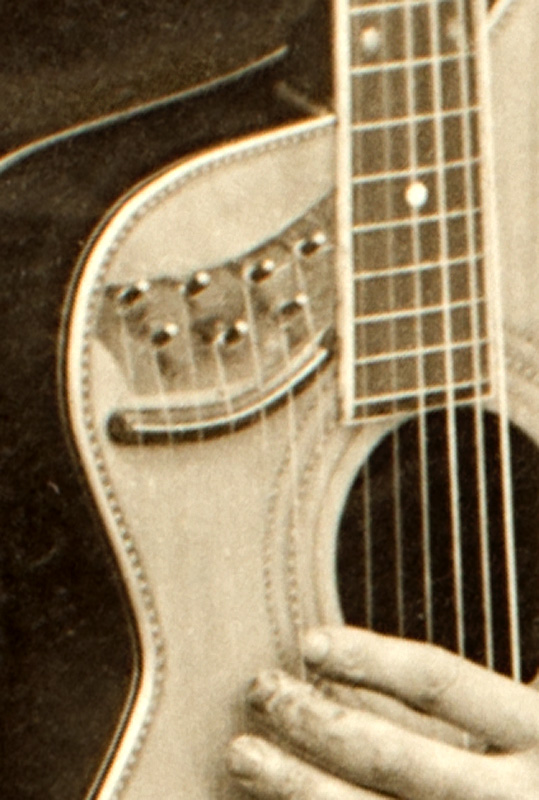
The slightly better resolution of this copy gets us tantalizingly closer to the details of the original stringing of these iconic instruments.

Also − did the subs originally go around the shaft of the slotted screw “nut posts” or over the heads? Though many of Knutsen harp guitars clearly had the basses wrap around the slotted screw “nut posts,” these two early specimens appear to go over (in the slots of the brass screws).
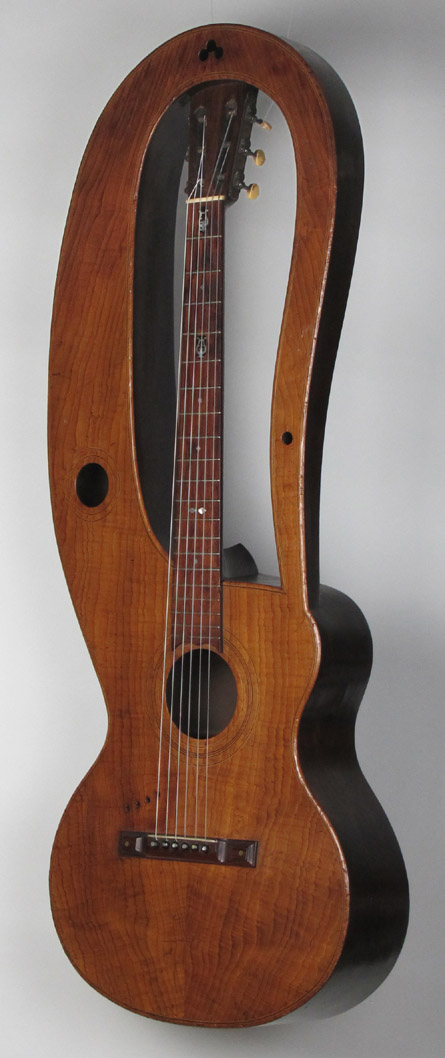
The Instruments:
Inventory # HGP25 (at left) is the second of the strange “continuous arm” harp guitars made by Otto Anderson (note that they are technically “hollow arm guitars” with six strings and not true harp guitars). Having seen both now in person, I remain captivated! They appear to be a “matched set,” the book-matched tops cut from the same amazing log/board (the consensus of luthiers is that it’s some form of walnut; I honestly have no clue).
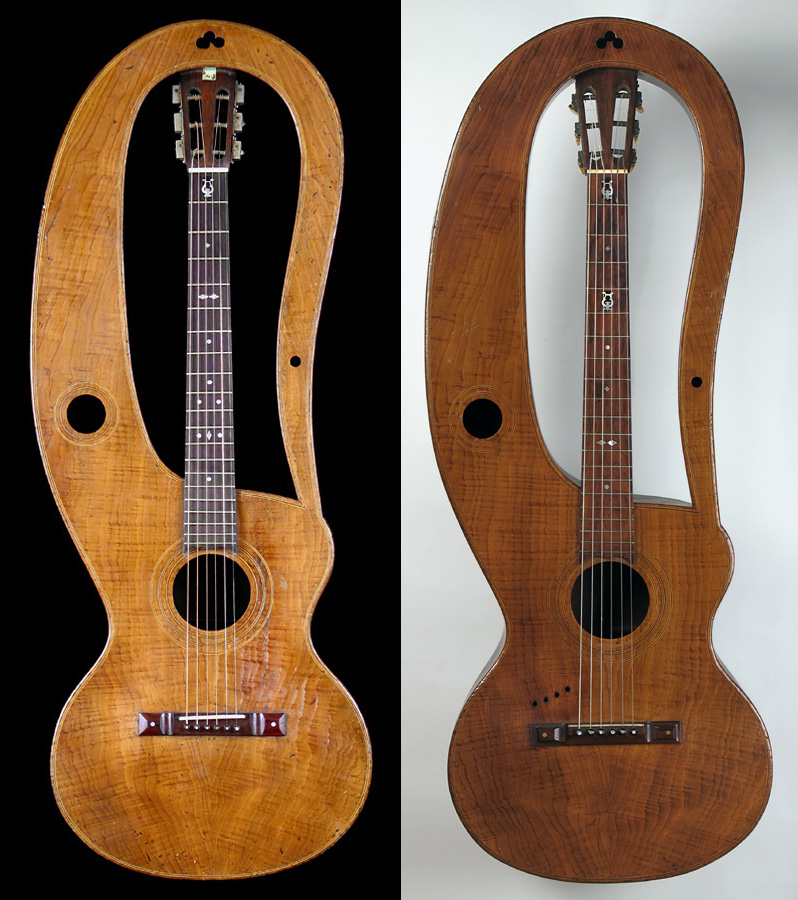
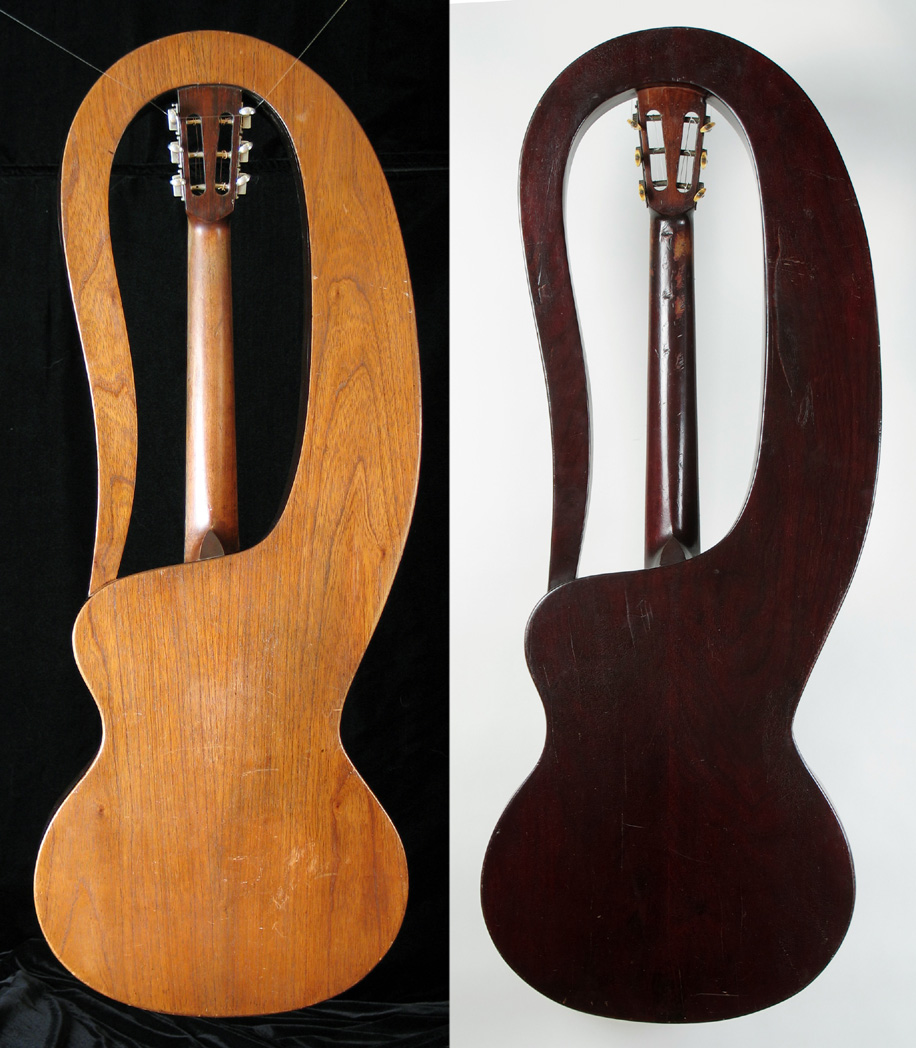
The back and sides of each are different, the more attractive HGP16 (Flip’s) having natural walnut, HGP25 (Gary’s) being dark-stained (probably similar walnut, but possibly rosewood).
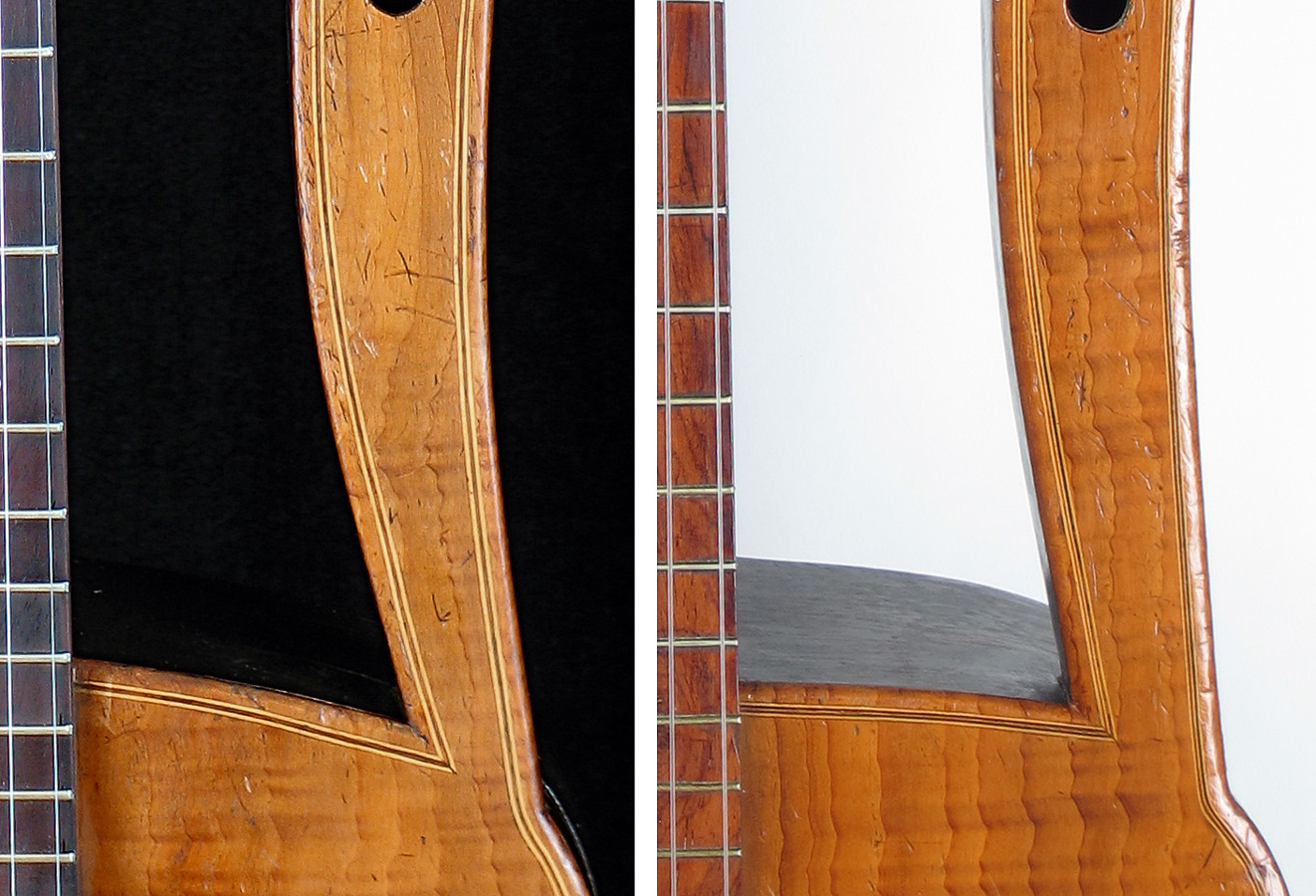
Interestingly, in place of binding, the tops are edged with inset violin-style purfling lines, the only Anderson (or Knutsen) guitars with this feature. Perhaps Anderson was experimenting with emulating violin tradition (he built them also). Though at a glance both instruments appear to have light/dark/light 3-ply purfling, closer inspection reveals that Gary’s is five-ply. Both the outside and inside edges of the tops are purfled, the inside perimeter creating an attractive “inner frame” obviously not possible on a violin.
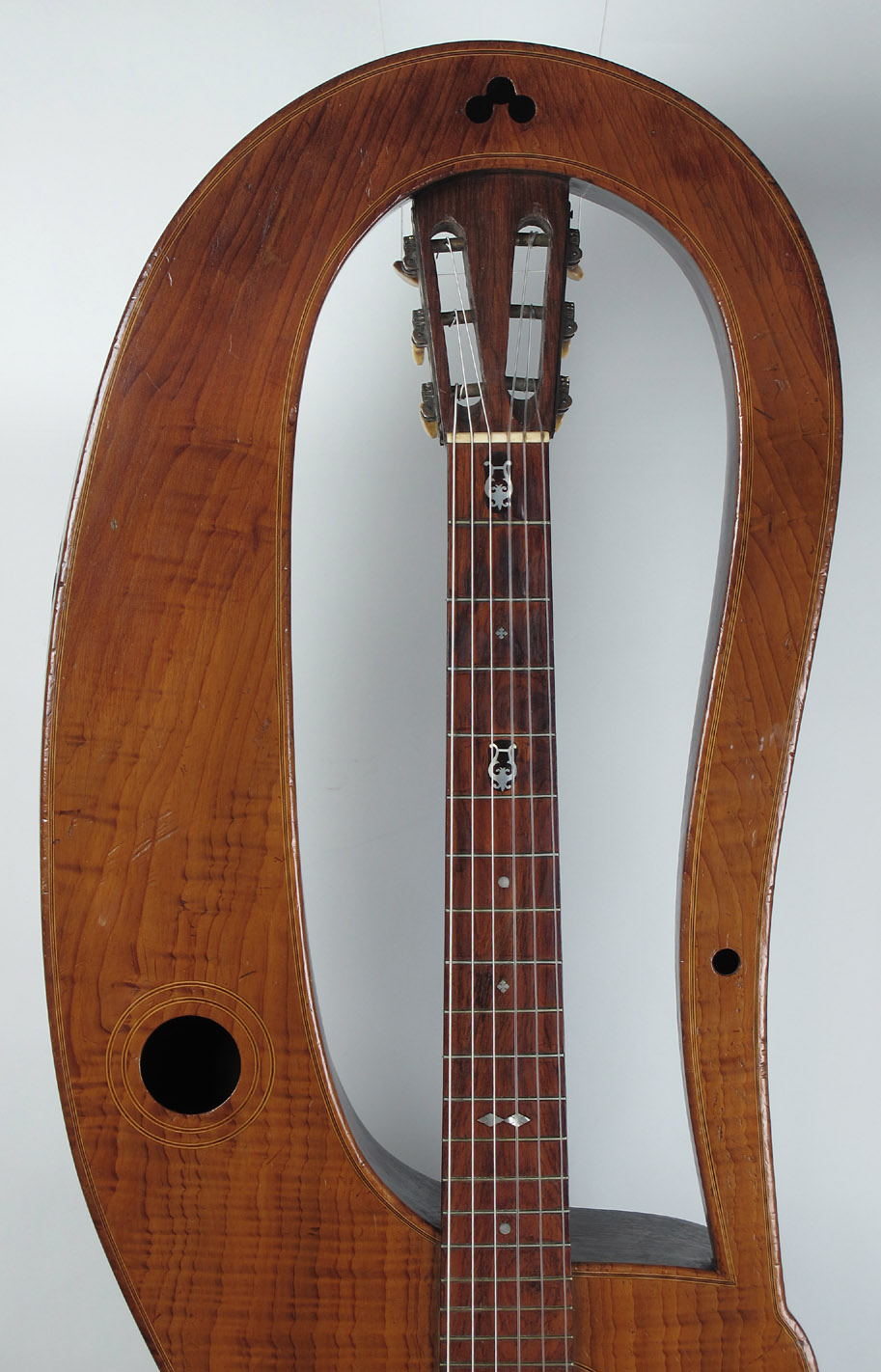
The scale of Gary’s is 25-⅜”. Note how Anderson’s configuration of these instruments puts the neck-to-body joint at 15-½ frets!
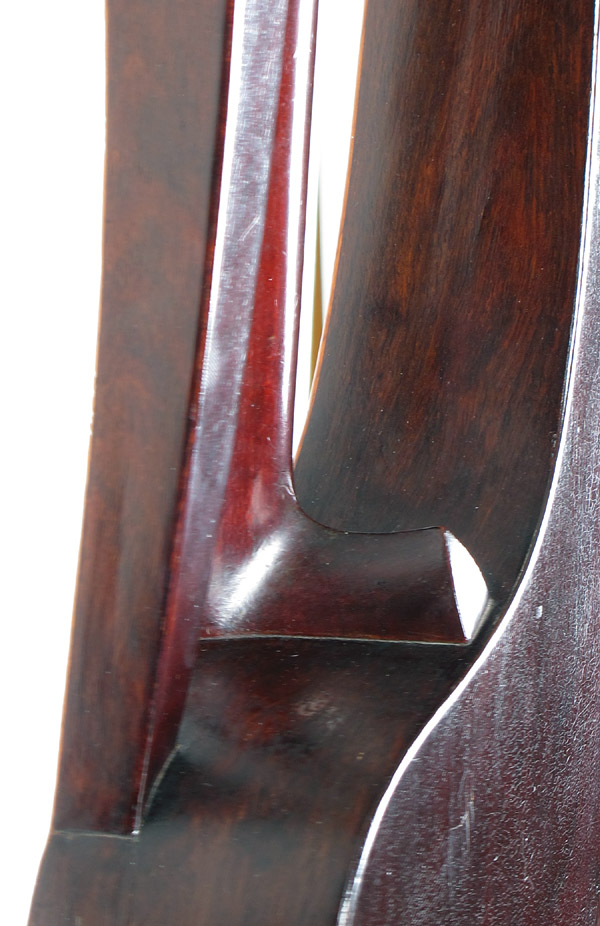
The neck heel is a bit tricky. Certain Knutsen heels are only glued flush. We believe that Anderson utilized mostly or only a dovetail joint, as in this partial Knutsen/Anderson specimen recently discovered by R. J. Klimpert:
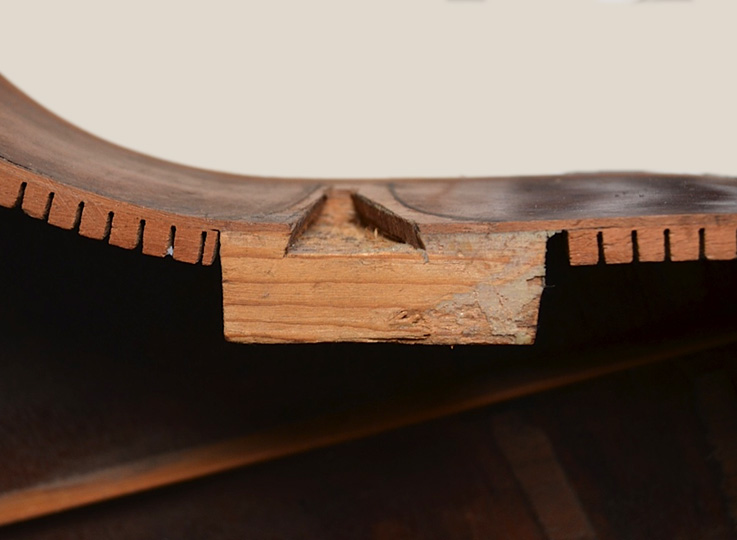
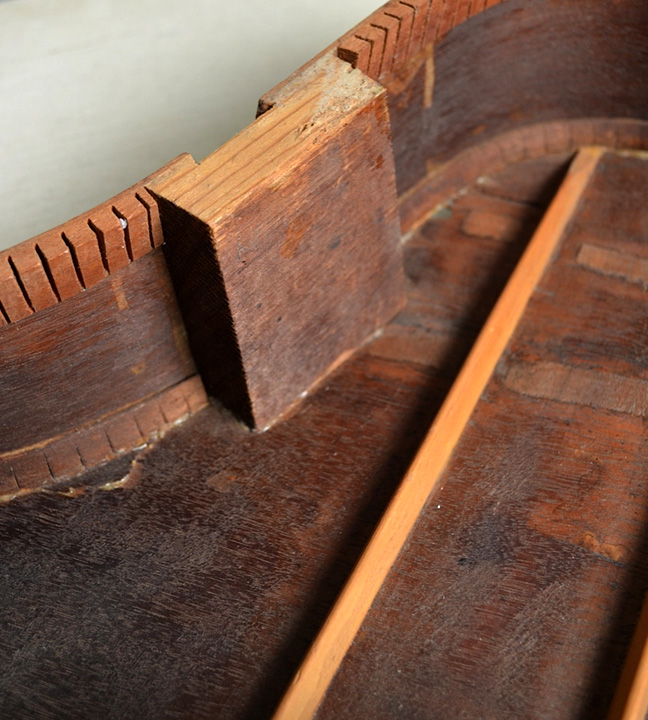
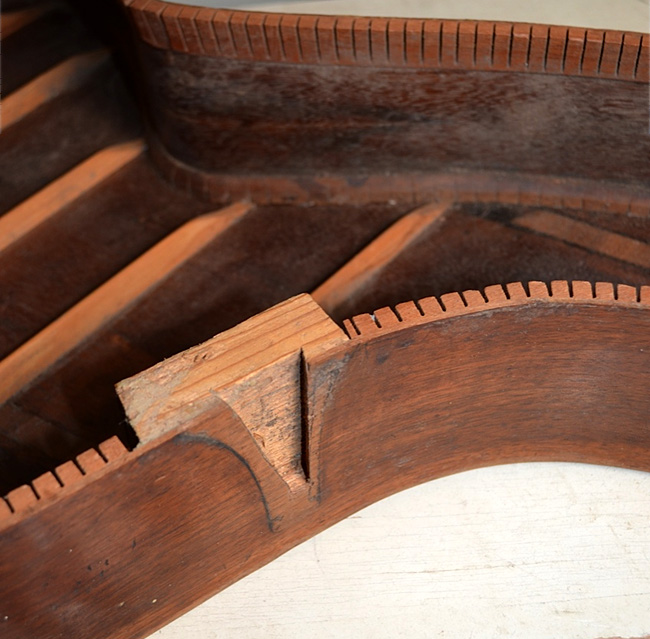
To be certain on the continuous-arm guitars, only removing the fingerboard or John Thomas’ X-ray magic would tell us.
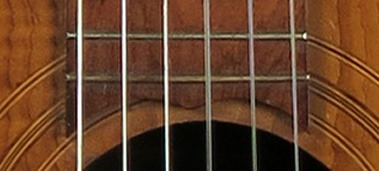
Another presumed “Anderson-only” signature feature is the double-scallop termination of the fingerboard. Look for this on Port Townsend instruments in the Knutsen Archives, and if you spot it, it’s a good bet that you’re looking at Anderson’s work (this includes the “1896 patent prototype guitar”).
 On both instruments, not only is the front of the headstock veneered with rosewood, but so is its back.
On both instruments, not only is the front of the headstock veneered with rosewood, but so is its back.
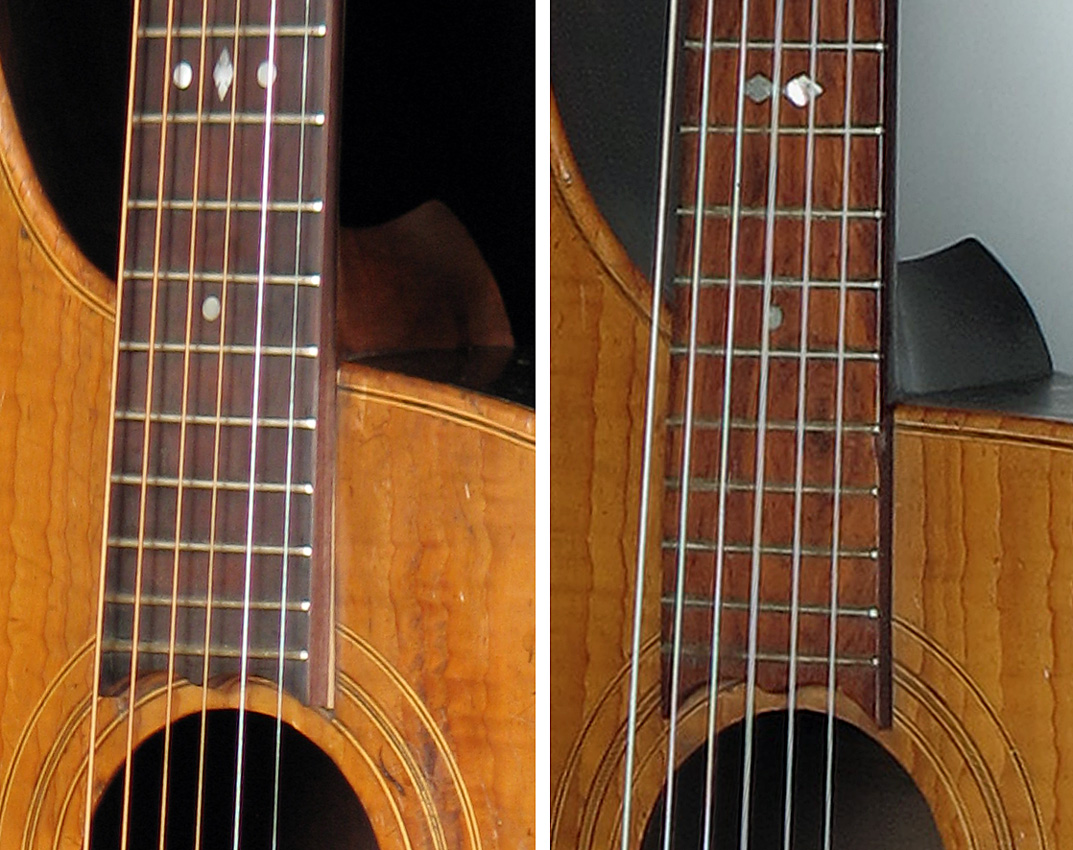
Sadly, both of these instruments long ago became severely bellied, likely due to being strung with too-heavy steel strings. Gary’s is currently unplayable, while Flip’s had a wedged shim installed underneath the fretboard to make it playable. Mirror inspection of Gary’s reveals nicely carved and finished scalloped braces. There were originally three ladder braces for the top, one above the soundhole, one below, and one halfway between the bridge and end block. The narrow bridge plate extends to both side walls. The back has a wood center seam, something Knutsen would never bother to do.
Perhaps to help support the deforming top, someone later added a hefty additional ladder brace, fitted just above and against the original brace just below the soundhole.
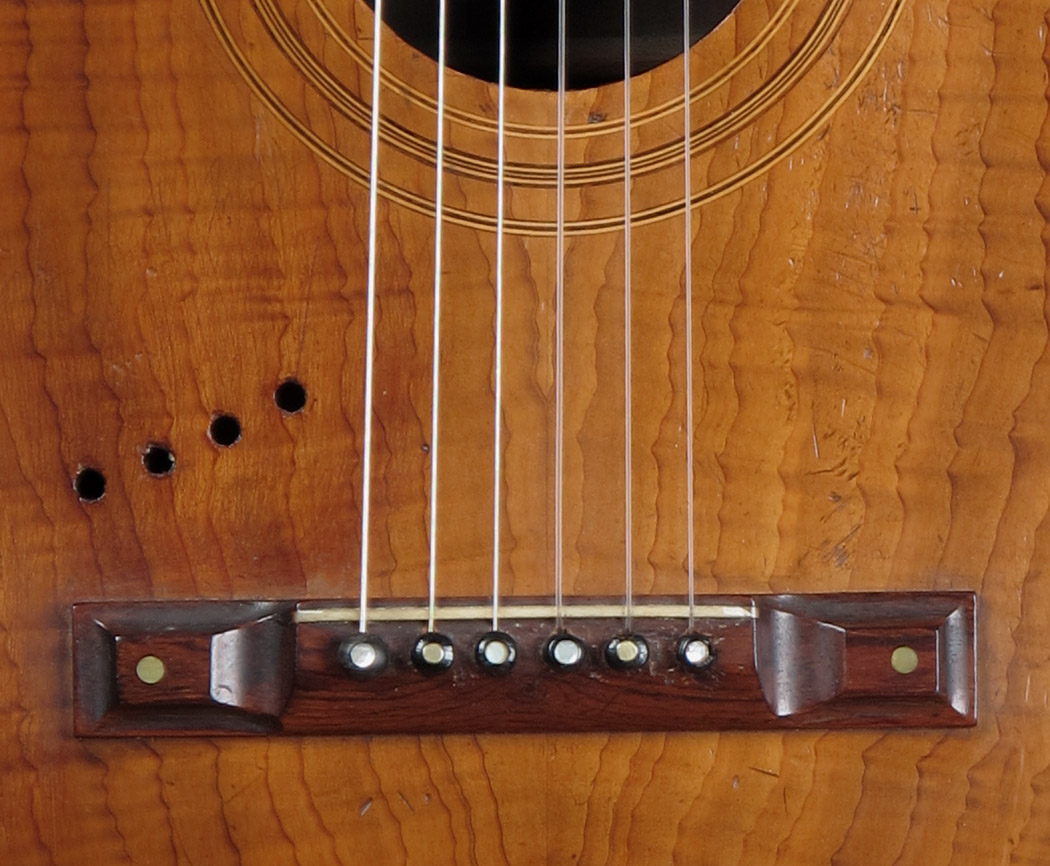
Or perhaps it was in anticipation of higher tension from additional added strings? Yes, I now had more insight into those four curious holes in the top. Someone had deliberately drilled these specifically for zither/piano pins – they even installed a supporting plate inside! But nowhere on the entire instrument did I find any sign of the expected attachment evidence for the opposite ends of these imagined strings.
My “synopsis”? It’s as if some enterprising person had seen one of Knutsen’s later Los Angeles harp steel guitars with the four short treble strings, and decided to add the same thing to this…except when they got halfway through the project they realized they had put them on the wrong side (thus deciding to abandon the idea, leaving only the unsightly reminder). Little else makes sense.

Originally, Jeanette Detlor naturally assumed that both of Gary’s instruments were two of the remaining four “Anderson children’s guitars” – and this one’s definitely an Anderson. But it’s certainly not a child’s guitar (even some adults might find it cumbersome). Nevertheless, by all accounts, it has remained solely in the possession of the Anderson family (Gary, Otto’s great-grandson, inherited both instruments from his mother, Lois Anita Anderson). As it stands now, I consider it a “personal Anderson family guitar” – built with Chris Knutsen’s knowledge and/or blessing. As originally discussed on its Archives listing, #HGP16, the other continuous-arm guitar, could have been made by Anderson for himself, for Knutsen, or specifically for the “mystery quartet” guitar player photographed with it. Incidentally, neither of the Anderson “continuous-arms” shows any evidence of ever having had a label, though other more normal (traditional Knutsen-style) Anderson-built Knutsens do. Perhaps this supports the theory that these strange “morphed-Knutsen” instruments were Otto Anderson’s own idea and design. Frustratingly, the exact time frame and designer/instigator of these curious and distinctive instruments may forever elude us.
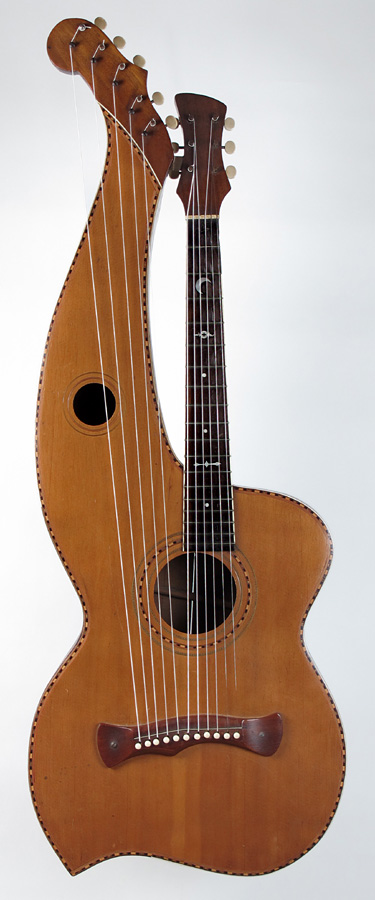
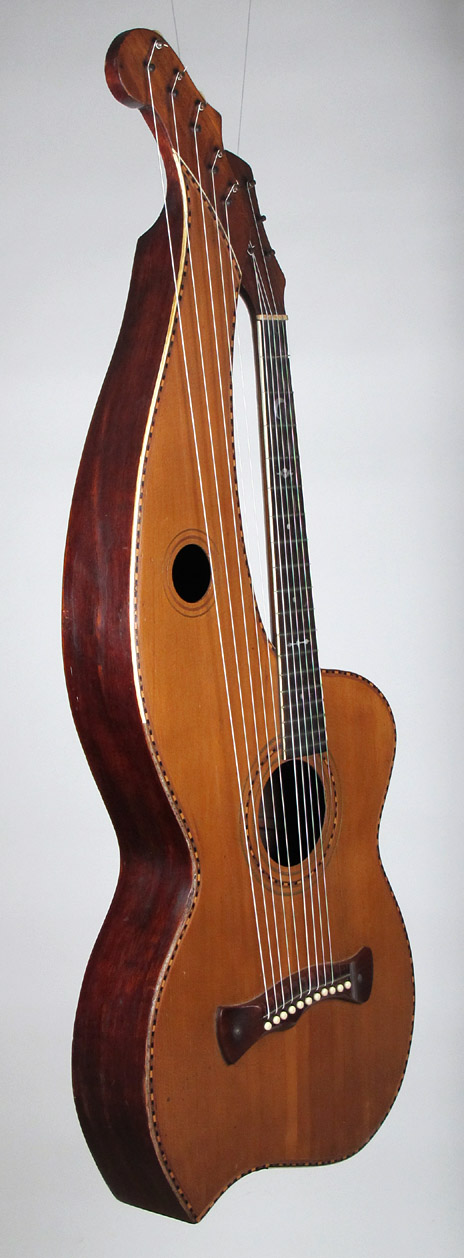
Gary’s second harp guitar is not only not one of the “Anderson children” guitars, it’s not an Anderson. It’s almost certainly all Knutsen-built. Like the one above, the lore is that it has always been in the Anderson family.
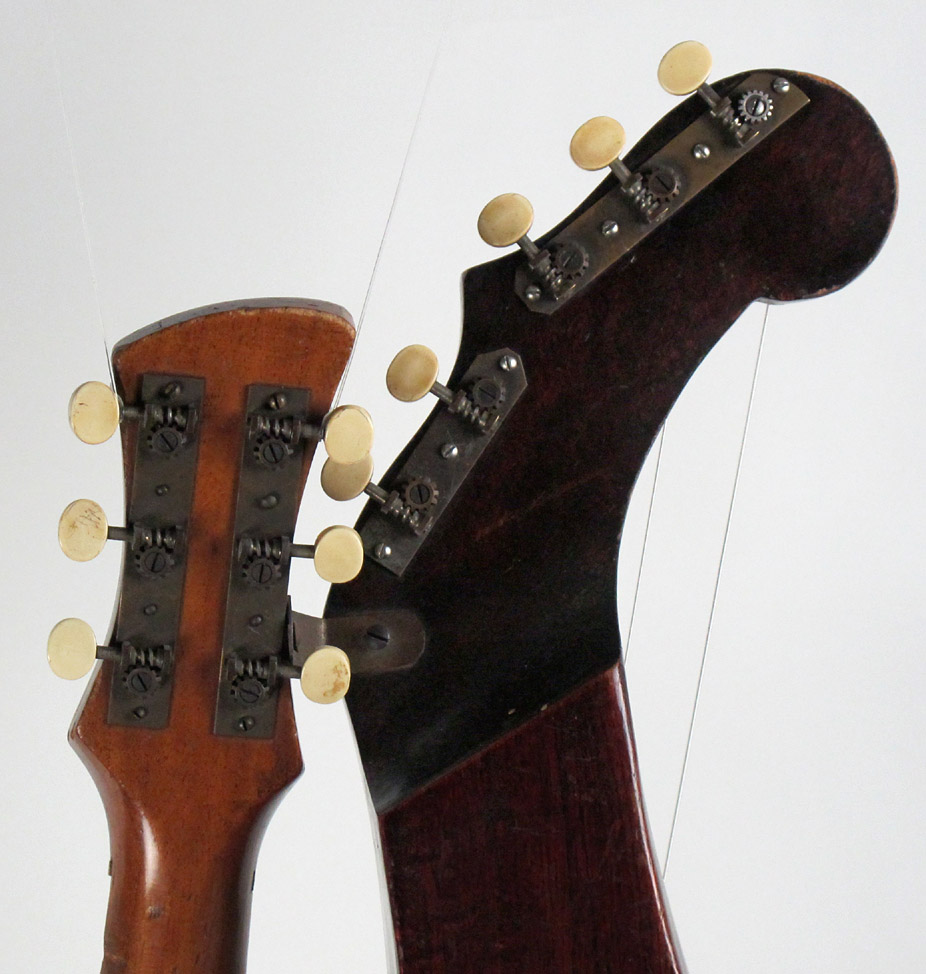
Upon first seeing it, I jumped to the conclusion that the unusually-shaped bass headstock was a sign that this was not a standard Knutsen Seattle era harp guitar (the “Lower Bass Point” body style). Though we imagine Anderson as being out of the picture by this period, the two men were still both in the Seattle area and certainly could have collaborated. However, when I received the additional photos in 2010, I saw that there was no neck heel, and more importantly, it had the remnants of a Knutsen label.
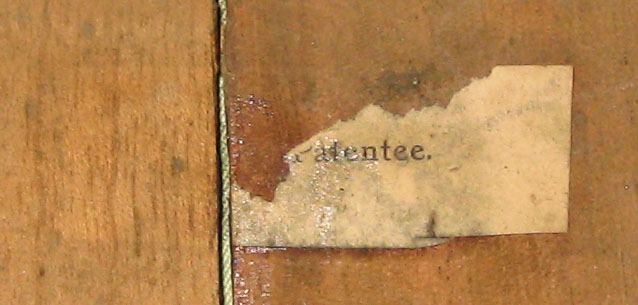
Which one? Well, that’s a bit tricky, as it resembles SE6, which I’ve catalogued as a typewritten label stating “C. Knutson, Sole Patentee.” (two slightly different examples are known, and yes – both are misspelled!). The size of this one seems to allow no room for Knutsen’s name. Gary Wright’s wife Rosie remembers that a torn portion of it that is now lost had “1898” handwritten on it. That would make sense, as this harp guitar would be protected under Knutsen’s second 1898 patent until early 1912.
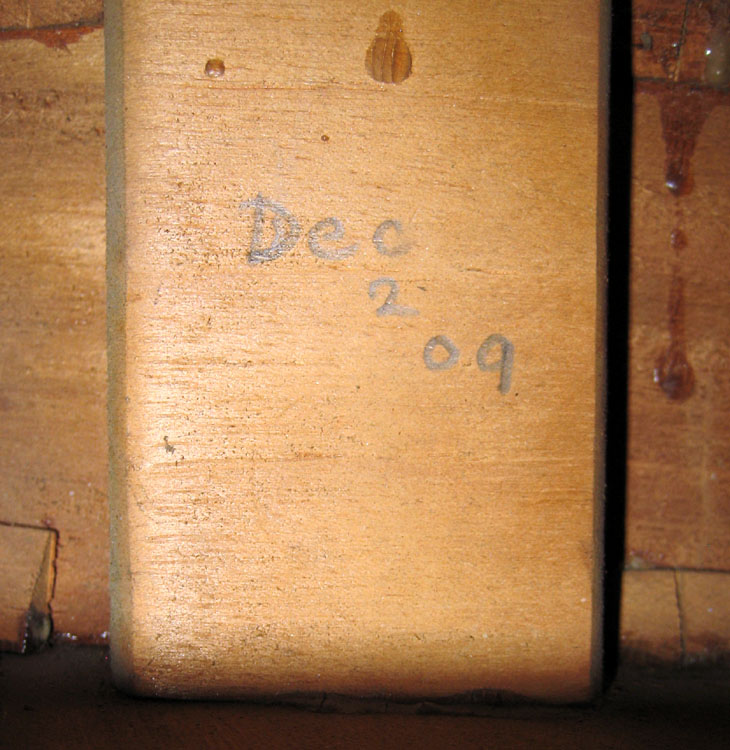
Speaking of dates, when poking around inside of this one, what should I find but a pencil date on the “neck block”! It is written very clearly: “Dec 2 09.” This is one of the very rare instances of finding a precisely-dated Knutsen instrument. I’m not sure how and when the inscription was made (or by whom), but I suspect it was Knutsen or some helper. Did they inscribe it before buttoning up the body? Or did they simply inscribe the small piece of wood and glue it in through the soundhole? (It’s not an actual “neck block” – it’s not even located under the neck – and seems to serve little value.)
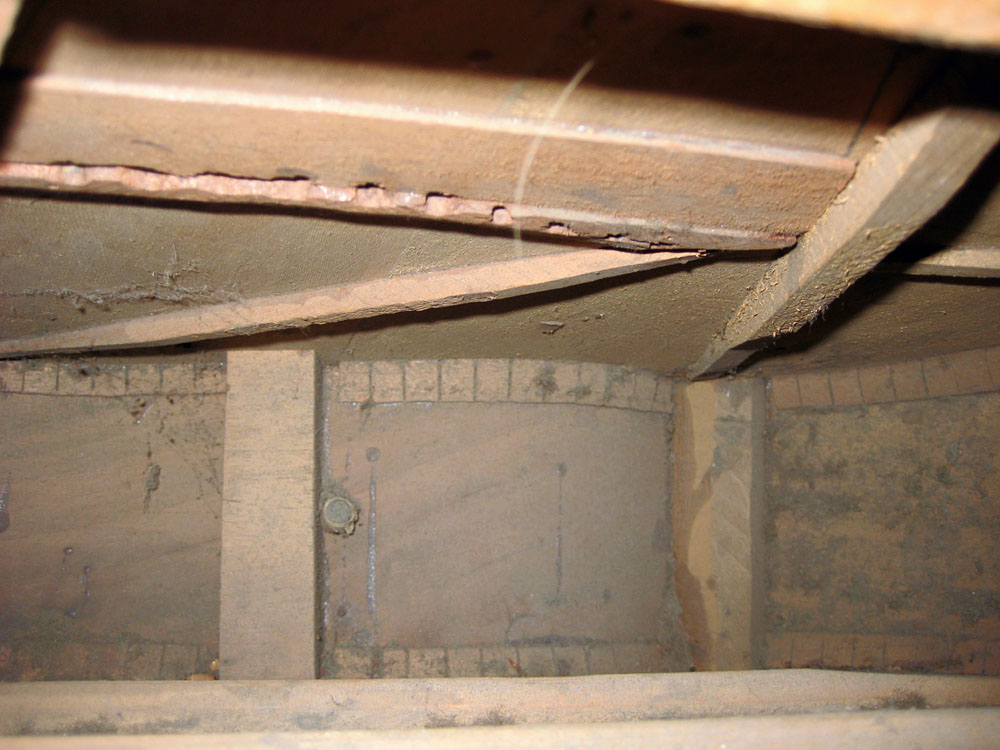
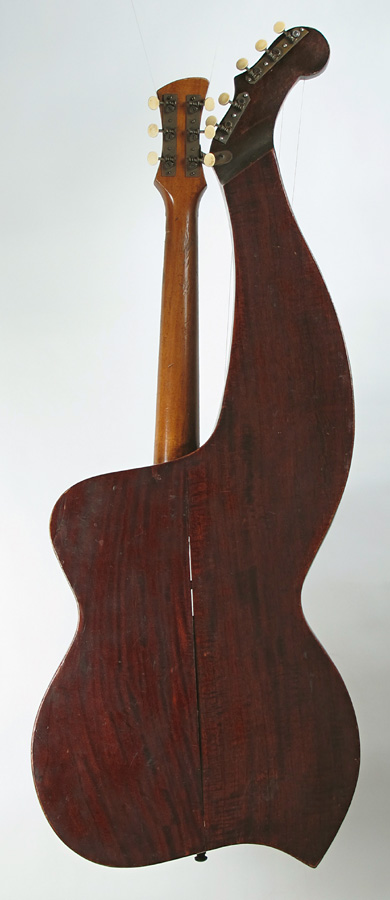
The rest of the guts of the instrument are pure Knutsen: crude ladder braces (some surprisingly beefy ones) and random smaller angled crossbars. No center seam, not even his dressmaker’s seam tape. The outside fairs much better (other than that the mahogany back is not bookmatched), and includes some fancy Knutsen trim.
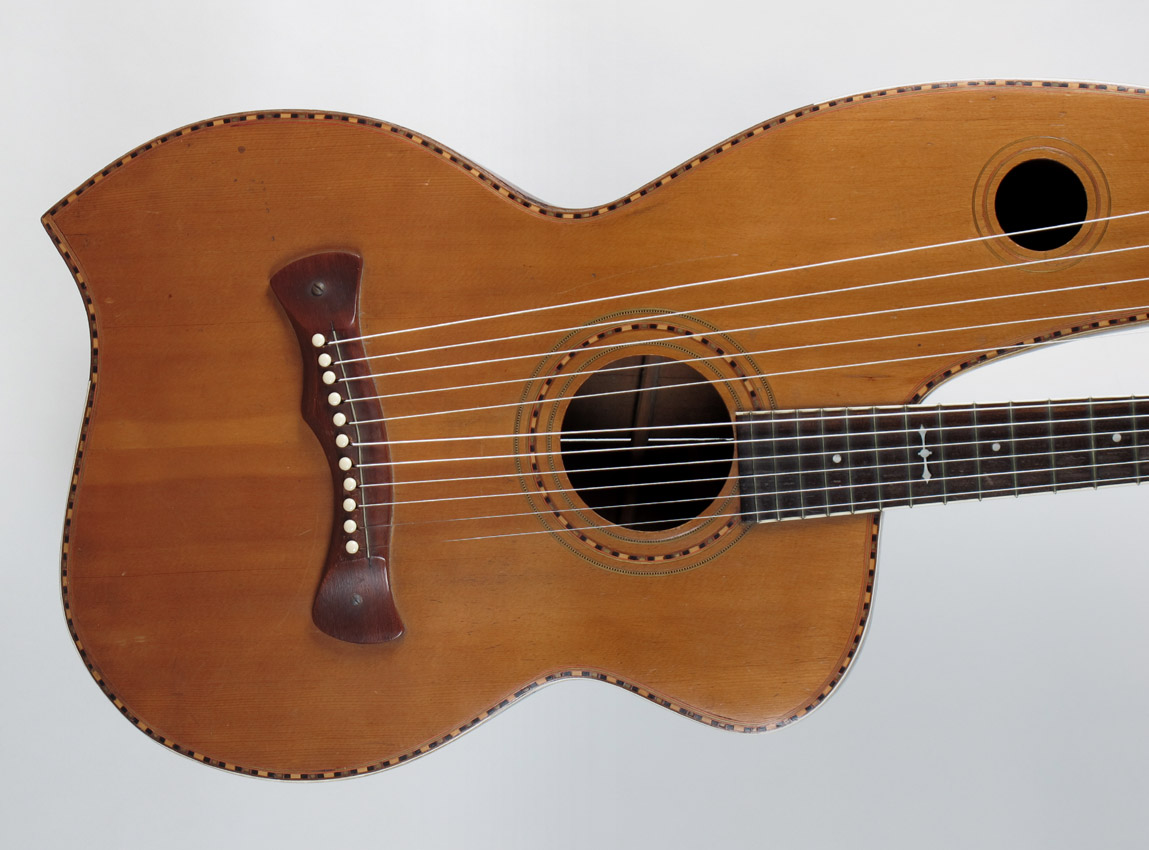
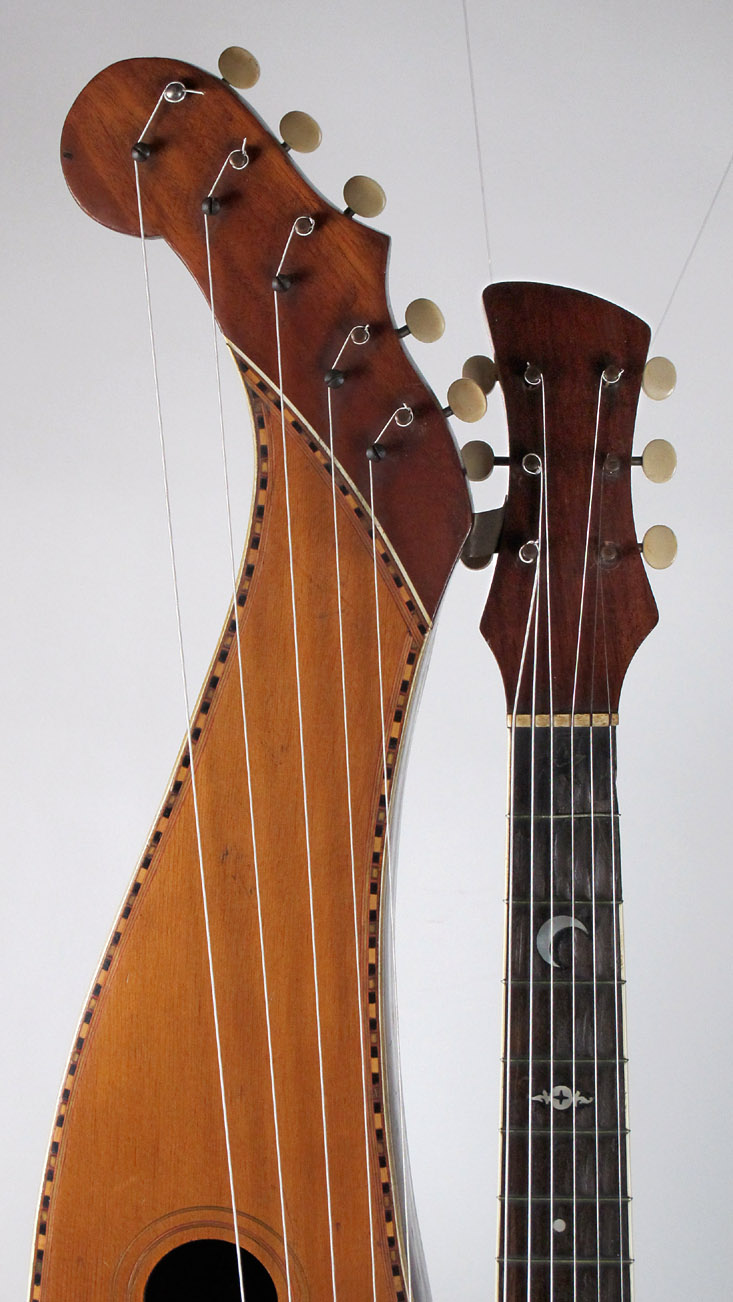
The top binding starts out with 3-ply red/green/red wood, continues with his trademark multi-colored marquetry, capped off with ivoroid binding.
And what of that “one-off” headstock? It, too, looks like Knutsen’s work and aesthetic, even though a new design.
If you check its original Archives page (again, not yet updated), you’ll see that I originally circa-dated it 1907-1909. This was a semi-educated/semi-wild guess on my part, based roughly on the style of the instrument and where I tried to fit this new bass headstock within my “Knutsen Evolutionary Tree.” This is a visual chart (and ongoing study) I still love.
Here’s Knuten’s “Darwinian” harp guitar timeline, with HGS58 now added in, exactly where I had originally theorized it, and now corroborated from its inscription:

Again, I’m not sure if Otto Anderson was at all involved in this instrument, and we’ll probably never learn how the family came to acquire it. Given the fact of their earlier close collaboration and their proximity in Seattle until Knutsen left around 1914, I guess I’m not too surprised that an instrument or two wouldn’t go back and forth between the two men.
So, some more details cleared up, but just as many mysteries remaining…
I’m just glad that the family kept these treasures through the generations; and a huge thanks to Gary for sharing them with us!
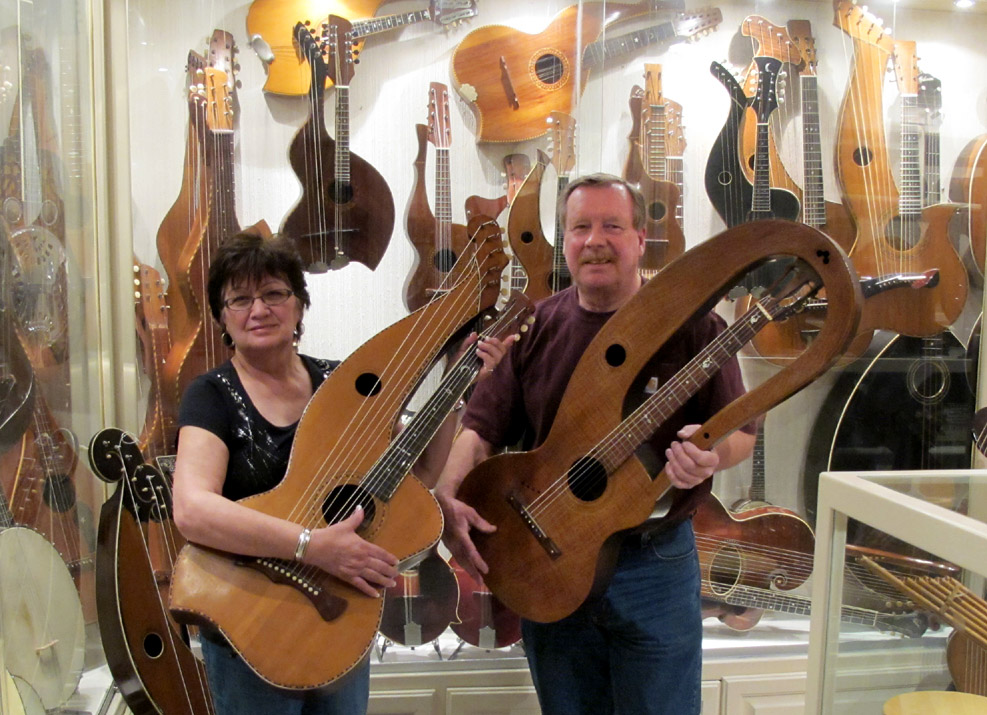 Gary with his Otto Anderson guitar, Rosie with the Knutsen harp guitar
Gary with his Otto Anderson guitar, Rosie with the Knutsen harp guitar

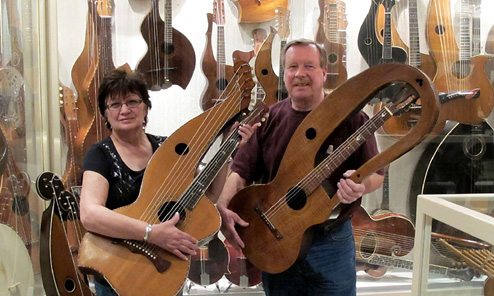
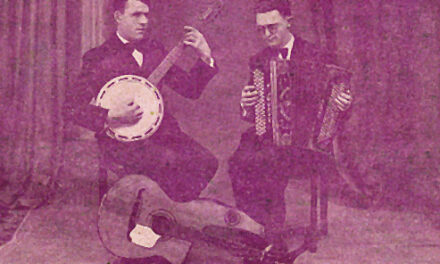
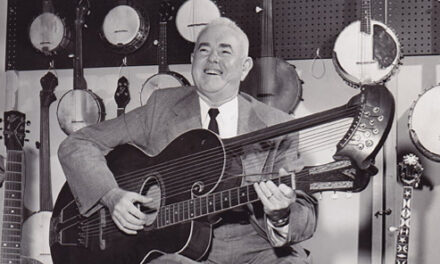
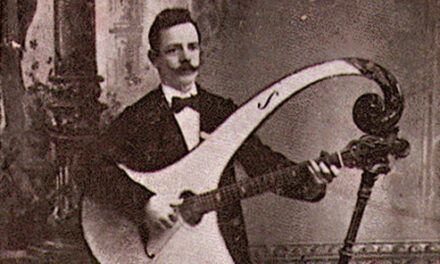
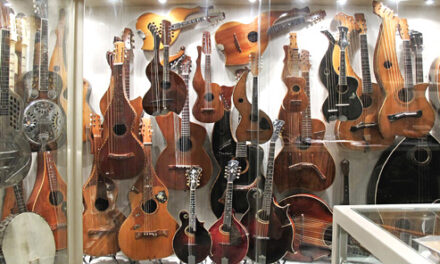
Hi Gregg, I really enjoyed reading this story and the way you incorporated multiple dimensions in it. It was like a harp guitar version of a Dan Brown short story. You’re keeping really busy I can tell. Keep it up! Mark
Gregg,
Thank you for a very enjoyable and informative read.
Chuck
Hi Gregg,
Thanks so much for this…fascinating story and beautiful photos! Where are Knudsons own lefty HG’sand/or others he made for fellow lefty H-guitarists.?
Thanks again,
Kevin
Gregg
Well done and so informative, we learned way more than we ever knew. It was so great to meet you and appreciate that you put so much work and effort into all that you have done to get the Anderson and Knutsen Harp Guitars story figured out.
Gary and Rosie
Gregg,
Fascinating reading. THANK YOU for all the effort you put into this.
Dan
You’re welcome, Dan – and thanks for your Foundation donations that helps pay our bills for such work.
Thanks for reading!
g